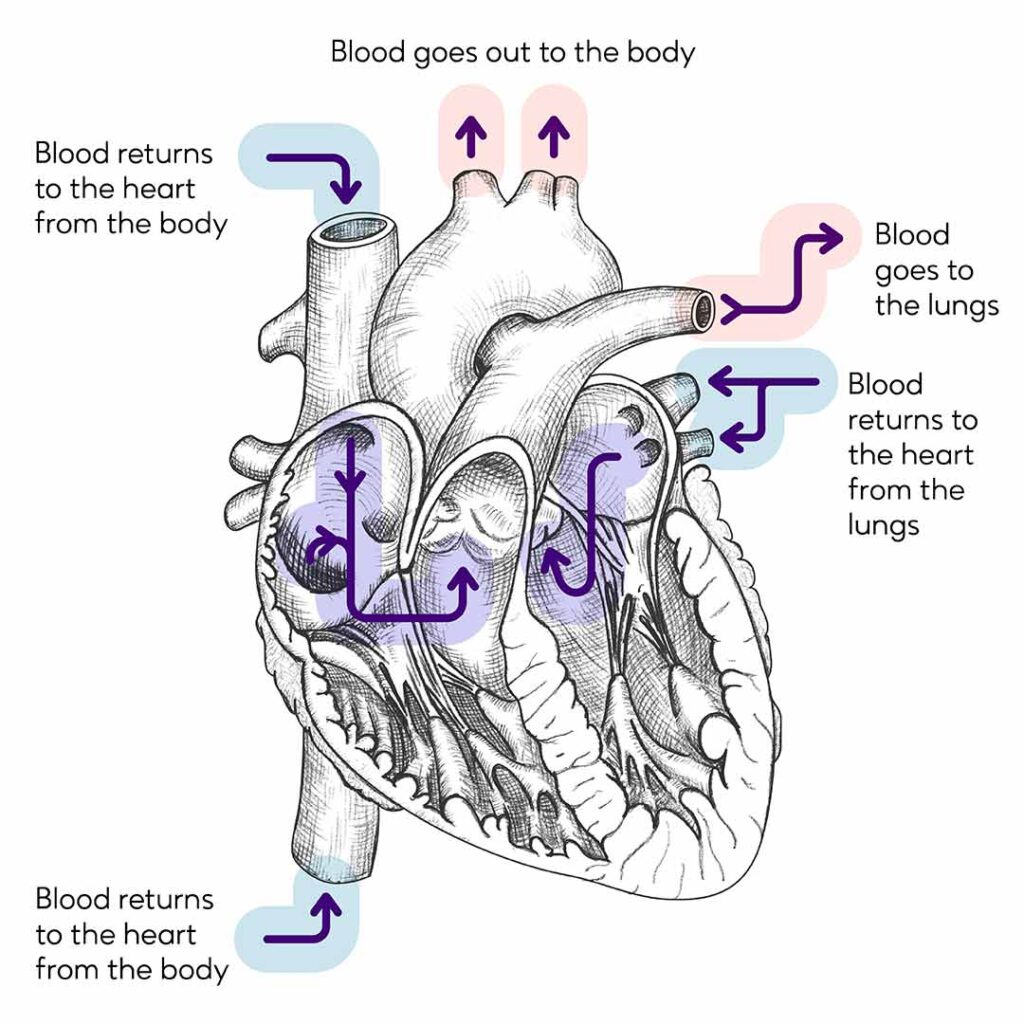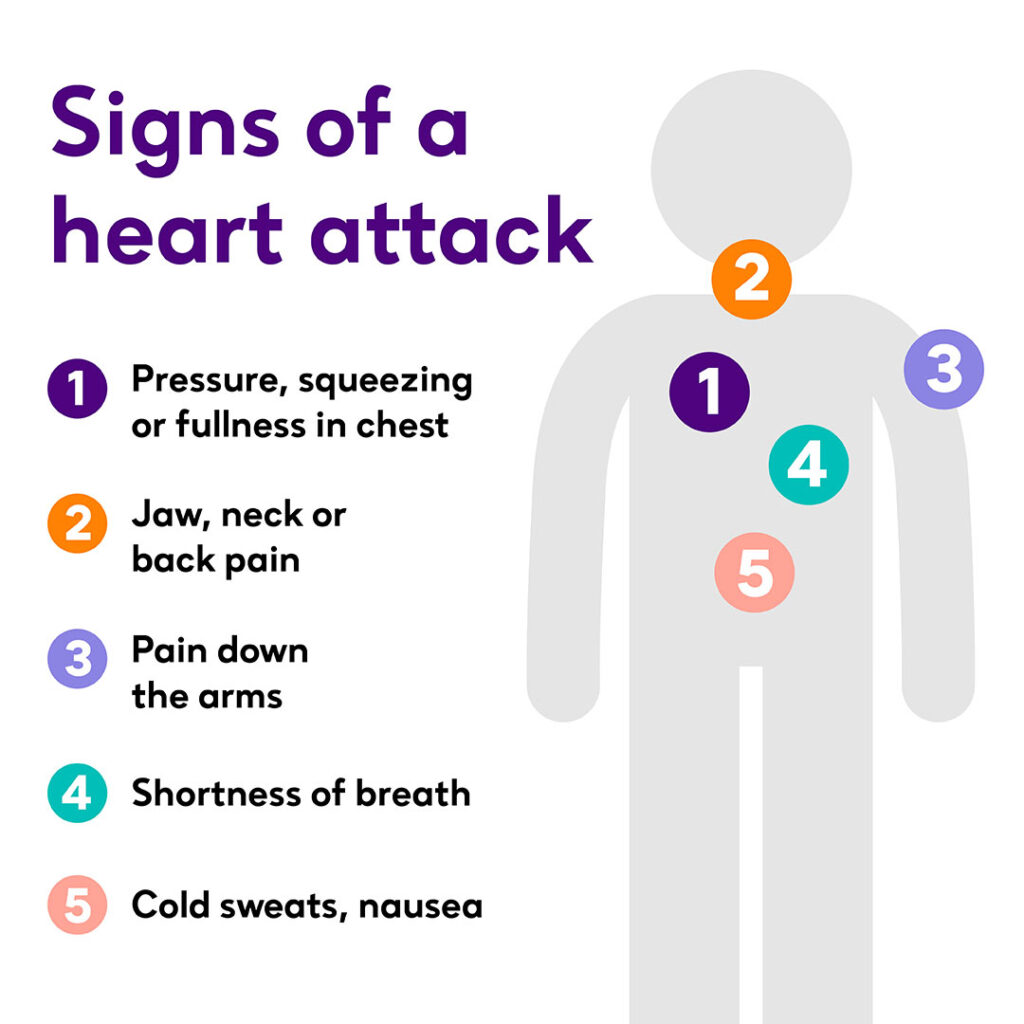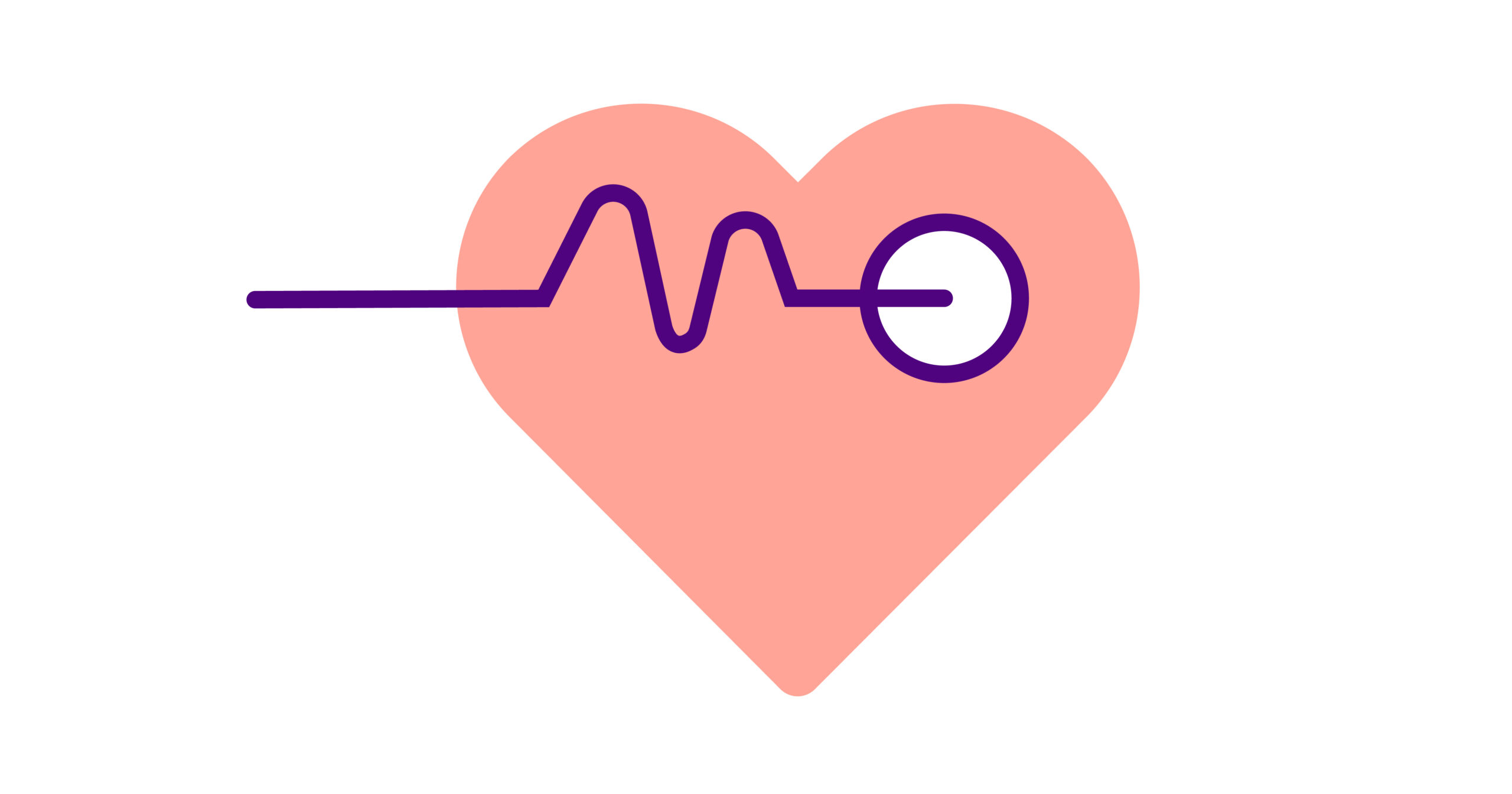The month of February is rooted in cards, candy and a common organ: the heart. This makes it the perfect time to learn more about your heart health and potential signs of a heart attack.
In fact, this February marks the 60th annual American Heart Month. This year’s campaign at the American Heart Association (AHA) is: Nation of Lifesavers. The focus is to learn CPR. That way you are ready to act in the event of someone going into cardiac arrest.
But in addition to learning CPR, watching for signs of a heart attack is very important too. According to the Centers for Disease Control and Prevention (CDC), someone in the U.S. has a heart attack every 40 seconds, totaling around 805,000 instances each year.
When you know the signs of a heart attack, you can get immediate medical attention and potentially save your own life or someone else’s.
How does the heart work in the body?
Your heart is a muscle about the size of your fist. It is located in the middle of the chest. The heart beats, or contracts and relaxes. As it beats, it forces blood through the heart and into the lungs to pick up oxygen.

From here, the blood returns to the heart and is then pumped into the rest of the body through blood vessels. Arteries and capillaries carry blood that is rich with oxygen and nutrients to every cell in your body.
Blood then returns to the heart through different blood vessels, which are called veins. This cycle repeats itself several times every minute of the day, through your entire life.
To do its work, your heart must beat on average 60 to 90 times a minute. When your heart is healthy, it can pump 1.25 gallons (5 liters) of blood every minute.
A healthy heart and circulatory system can keep up with the demands of normal activity, but when they are not working properly, problems may arise and you may experience signs of a heart attack.
Signs of a heart attack
Heart attack symptoms can come on rapidly or start slowly with only mild pain. That’s why it’s crucial to pay attention to any discomfort in your body.
It’s important to note that signs of a heart attack may not appear suddenly and not every person has all of them. If you suspect you’ve had or are having a heart attack, don’t ignore it! Call 911 and get immediate medical attention.
Specific signs of a heart attack to watch for include:
- Chest pain (may radiate from the center, can be lasting or come and go)
- Pressure, squeezing or fullness in chest
- Radiating pain in the jaw, neck and down the arms
- Shortness of breath (like someone standing on your chest)

According to the AHA, women often experience less typical symptoms of a heart attack. While chest pain may be their main symptom, it’s common to also experience shortness of breath, cold sweats, nausea, vomiting and back pain.
Once again, the symptoms and signs of a heart attack listed are just some of the most commonly experienced and not a full, inclusive list for each person. If you have any concern, don’t wait to call 911 – it could save your life.
How to prevent a heart attack
People have different risk factors and levels for a heart attack. Common risk factors include smoking, high blood pressure, high cholesterol, diabetes and obesity, but there are other risk-enhancing factors such as a family history of heart disease or other chronic conditions.
Visit the AHA’s website more information about risk factors.
While you can’t change certain risk factors such as a chronic condition, there are some that you have control over.
Working to build a healthier lifestyle may decrease your risk of having a heart attack. Below are a few strategies that may help you prevent a heart attack.
Medication management
It is important to take your medications as prescribed and to keep an accurate list of all medications you take, even those that don’t need a prescription.
Medications for different problems may work against each other, or make one another have a stronger effect on you. Be sure you talk to your physician or nurse before you take any new medicine, including those you can buy over-the-counter, prescription drugs, vitamins and herbs, as some of them can make your condition worse.
Eating healthy
It is important to eat the right foods, the right amounts, at the right time to help prevent a heart attack. Basic dietary guidelines from the USDA include:
- Vary your veggies: Any vegetable counts whether it is canned, frozen or dried!
- Focus on fruits: Whole fruit is preferred to fruit juice since juice contains added sugars, but any fruit counts whether it is canned, frozen or dried!
- Make at least half of your grains whole: Read labels to look for whole grain ingredients like whole wheat, oatmeal and brown rice.
- Go lean with protein: Protein portions like nuts, beans, seed, poultry, lean meat, seafood, soy and eggs should take up ¼ of your plate.
- Get your calcium-rich foods: Try skim milk or 1% milk and non-fat yogurt, but pay attention to levels of sodium and sugar in each product.
Controlling sodium intake
Try to limit how much salt (sodium) you eat. Food that is high in salt can cause your body to hold more fluid. This can make your blood pressure go up and increase your risk of a heart attack. Examples of foods high in sodium include:
- Canned meat, chicken or fish
- Frozen dinner entrees
- Processed American cheese
- Ketchup
- Canned soups
Controlling stress
Some stress can be good for the body, but when stress is high, sudden or lasts a long time, it may also affect how well your heart works.
- You can try to talk positively to yourself and do something you enjoy every day. Or when you’re feeling extra stressed, take a deep breath, count to 10 and then exhale slowly to help control stress.
Stop smoking and limit alcohol consumption
Smoking increases the heart’s workload. It takes away blood flow to the heart muscle itself, removing much-needed oxygen and nutrients. Smoking makes the vessels that carry the blood smaller, which makes the heart pump harder.
Ask your physician about how much, if any, alcohol is safe to consume, especially if you are high-risk for a heart attack.
Manage your weight
If you are overweight, try to routinely exercise and eat healthy to decrease your weight. Even just few pounds can make a difference.
How home health can help
If you were recently diagnosed with a chronic condition and are considered homebound, you may be eligible for home health services.
Home health clinicians will educate you on your condition and provide practical management strategies to help you improve your quality of life and meet your specific health care goals. With their close access to your home environment, they can teach you signs of a heart attack to watch for and recommend specific changes to your diet and lifestyle that may put you on track to preventing a heart attack or serious heart complication.
Social Share
At Enhabit our patients are our number one priority. From providing the latest medical practices to building deep personal connections, we’re focused on upholding every patient’s dignity, humanity and sense of control on their health care journey.
Home health
Our home health services give patients access to the care they deserve in the comfort of their own homes. From disease and injury management to recovery from surgery, our clinicians help patients confidently achieve their health care goals.
Hospice care
Our hospice care services place importance on the comfort of every patient living with a terminal illness. Our caring professionals are dedicated to providing not just physical care, but spiritual and emotional support to every patient and their loved ones.






